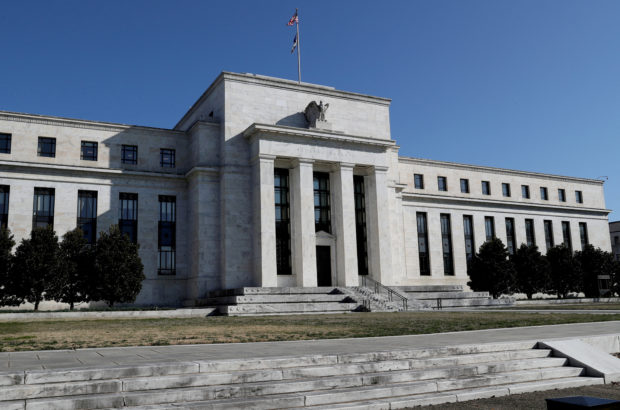[ad_1]
The world’s eyes have been glued to an epic competitors that has been unfolding in Beijing between the globe’s main contenders. The competition is fierce, and it is anybody’s guess who will emerge the victor. No, we’re not speaking in regards to the Winter Olympics. We’re speaking in regards to the ongoing commerce struggle between the US and China.
The commerce struggle is now virtually 4 years outdated. In 2018, President Trump fired the primary photographs by imposing tariffs on numerous Chinese language merchandise. China retaliated, imposing tariffs on American merchandise. The struggle saved escalating — with either side making their tariffs greater and extra expansive.
Then, in January 2020, President Trump met with Chinese language Vice Premier Liu He on the White Home, and so they each signed the “Section One” commerce deal. Consider it principally as a commerce armistice. It prevented the struggle from escalating additional, and it provided a roadmap for the 2 world powers to doubtlessly grow to be commerce buddies once more.


Chad Bown has been following the commerce struggle intently. He is a senior fellow on the Peterson Institute for Worldwide Economics and co-host of the Commerce Talks podcast. He says that, from the start, the Section One commerce deal was fairly bizarre.
“The strangest half,” Bown says, was a provision that instructed China to purchase an additional $200 billion of American-made stuff. That’s, not solely did China need to return to purchasing the quantity of stuff it had purchased earlier than the commerce struggle, it needed to go above and past that. $200 billion above and past that. And it had to take action in two years; by the tip of 2021. “We had by no means seen a commerce settlement like that earlier than,” Bown says.
Now that it is 2022 — and China’s deadline to purchase boatloads of American-made stuff has handed — Bown lately crunched the numbers to see how a lot China ended up truly shopping for. “Ultimately,” Bown says, “China truly purchased none of the extra $200 billion of exports that it promised within the settlement.”
Zilch. Nada.
But it surely’s truly worse than that. Whereas China did ramp up its purchases of U.S. agricultural merchandise, relating to shopping for U.S. services total, it nonetheless hasn’t even returned to purchasing the quantity of stuff it had purchased from America earlier than the commerce struggle started.
[Editor’s note: This is an excerpt of Planet Money‘s newsletter. You can sign up here.]
From the start, Bown says, it was fairly clear that Trump’s Section One commerce deal was unrealistic. By the point it was signed, the commerce struggle had already been waged for nearly two years. It had already achieved tons of injury to enterprise relationships between the 2 nations. Plus, the customarily punishingly excessive tariffs on either side remained (and nonetheless stay) in impact. Section One did not finish them. It simply prevented them from going even greater. The typical tariff on items affected remains to be about 20% on either side. “The truth that the Chinese language tariffs have been nonetheless in place discouraged the Chinese language non-public sector from being those to purchase American stuff,” Bown says. Add to this, a slowing Chinese language financial system and slowing US exports. “All indicators pointed to this being a extremely, actually huge ask.”
The Biden Administration Needs China To Pony Up
Final week, the Biden Administration made clear it was not proud of Beijing failing to purchase the boatloads of American-made stuff they promised they’d purchase within the Section One deal.
As an nameless U.S. official advised Reuters: “As a result of we inherited this deal, we engaged the (Individuals’s Republic of China) on its buy dedication shortfalls, each to struggle for U.S. farmers, ranchers and producers, and provides China the chance to comply with by means of on its commitments. However our persistence is carrying skinny,” the official mentioned. This official urged China to take “concrete actions” to satisfy its promise.
President Biden has, for essentially the most half, continued Trump’s commerce coverage in direction of China. That is regardless of rising proof that the coverage has harmed the U.S. financial system, whereas additionally not doing an entire lot to wreck China’s financial system or change China’s habits.
In 2021, China introduced a record-breaking commerce surplus. That’s, it bought a heck of much more to the world than it purchased from the world. In fact, there’s much more than the commerce struggle affecting China and the broader world financial system. Worldwide, the pandemic shifted spending on in-person companies to onerous items. And manufacturing onerous items is China’s speciality.
However, that mentioned, Bown believes the commerce struggle has confirmed much less efficient than the Trump administration initially believed it will be. Whereas the U.S. has leverage, that leverage is restricted. “Finally, China may promote much less issues to the US, however, you already know, we’re solely 330 one thing million individuals and the world is 7 billion.”
Some supporters of Trump’s tariffs hoped the upper prices of Chinese language merchandise would assist revive American manufacturing. However, the tariffs focused what economists name intermediate merchandise, or inputs, that are components, elements, and supplies that American companies use to construct stuff right here. These tariffs have made it costlier to do manufacturing in America.
“We now have an enormous physique of financial proof that principally makes the case that tariffs have made the American manufacturing sector much less aggressive,” Bown says. “It is tougher for American firms to compete with firms in Europe or Japan or wherever else on the planet that may proceed to get these Chinese language merchandise at decrease costs — so it truly harms the competitiveness of the American manufacturing sector.”
Whereas yow will discover tales of American producers reshoring due to both the commerce struggle or the pandemic, or each, Bown says, there’s not likely any proof that it is occurring “at any form of measurable degree.” Analysis additionally finds that American shoppers are being damage as a result of companies are passing on the prices of excessive tariffs to them. Add to this the results of China’s excessive tariffs on American exporters, and there is a robust case to be made that the most important loser from America’s commerce struggle with China is America.
There’s clear proof that the commerce struggle has been useful to a minimum of one group: different international locations. A latest examine by Pablo Fajgelbaum, Pinelopi Ok. Goldberg, Patrick Kennedy, Amit Khandelwal, and Daria Taglioni finds that, principally, the commerce struggle resulted in mini export booms for a lot of bystander international locations.
Bown factors to some vivid examples of countries on the sidelines of the commerce struggle immediately benefiting from it. When China levied massive tariffs on American soybean growers, for instance, Brazil, Argentina, and different soybean exporters stuffed within the hole. When China levied massive tariffs on imports of lobster from Maine, he says, Chinese language shoppers started buying extra lobster from Canada. Some manufacturing commerce additionally seemingly left China and headed for neighboring international locations, like Vietnam, Thailand, or Malaysia.
However the commerce struggle with China is about much more than economics. It is primarily about politics, each domestically and internationally. Polls of Individuals present that China could be very unpopular. Most Individuals need the US to be robust on the nation — and it appears they could be prepared to have a barely weaker financial system to try this.
The tariffs could also be dangerous economics. They usually could also be failing to vary China’s habits. However, Bown says, “Politically, it is very troublesome to reverse course with these tariffs on China.”
After we requested him about his considerations and hopes about US-China relations, Bown talked about worrisome traits in China. During the last ten years, it has been sliding towards even higher authoritarianism, statism, suppression of human rights and oppression of minorities. Because of this, Bown says, his huge concern is that relations are solely going to worsen.
Curiously, for a commerce economist a minimum of, Bown’s reply had nothing to do with economics. “I may give you an financial reply,” he says. “However sadly that falls on deaf ears for the time being.”
[ad_2]
Source link


/cloudfront-us-east-2.images.arcpublishing.com/reuters/54CZWTH7OBI4XCIIPFKA2JZUQM.jpg)

/cloudfront-us-east-2.images.arcpublishing.com/reuters/UE6M4QUVOZPYLBRQXSROQVGVEE.jpg)











